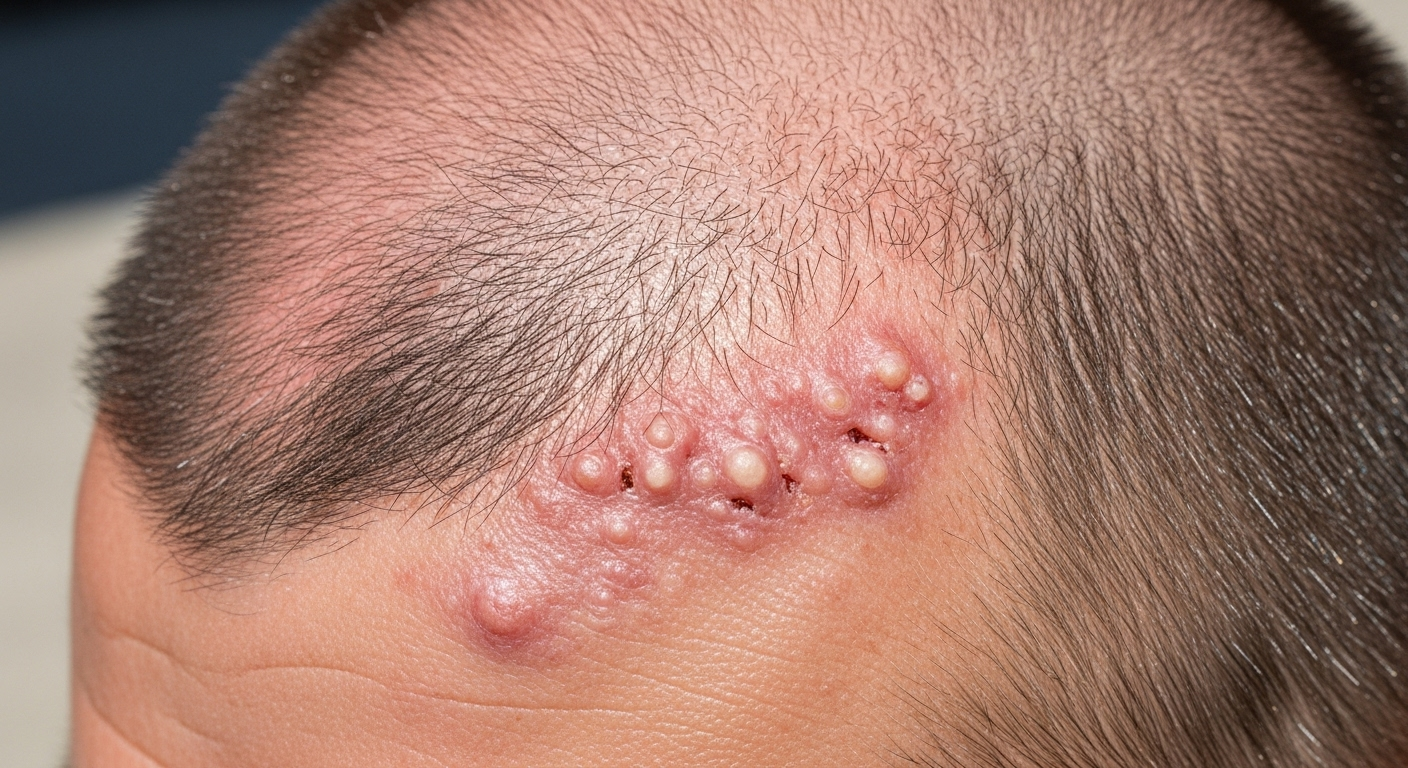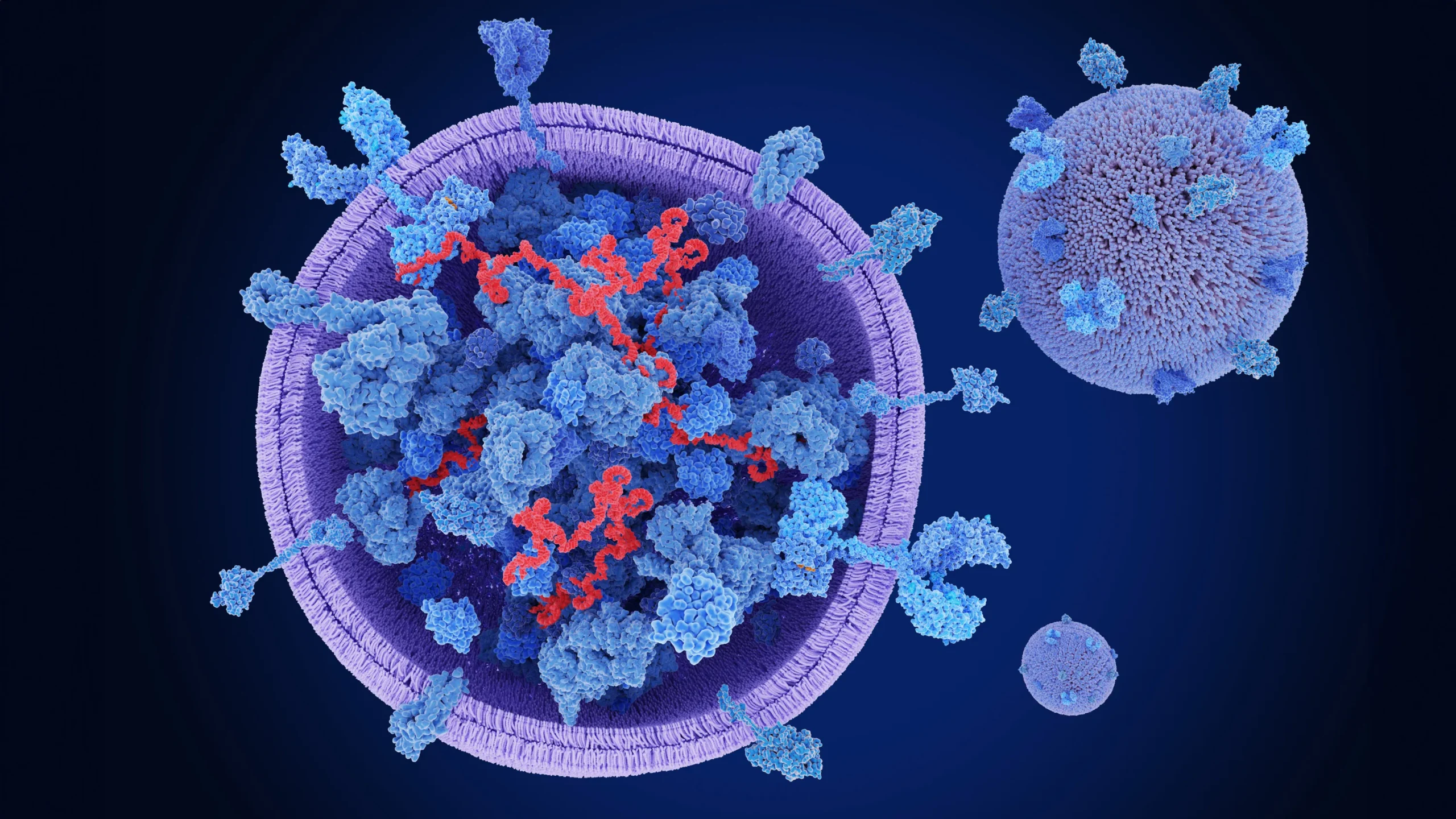Shingles hair loss is a common yet distressing problem faced by individuals recovering from this viral infection. Shingles, also known as herpes zoster, affects the skin and nerves and can, in some cases, lead to hair loss. In this article, we will delve into the connection between shingles and hair loss, explore its causes and …
Shingles hair loss is a common yet distressing problem faced by individuals recovering from this viral infection. Shingles, also known as herpes zoster, affects the skin and nerves and can, in some cases, lead to hair loss.
In this article, we will delve into the connection between shingles and hair loss, explore its causes and symptoms, and provide treatment options that can help you manage this condition effectively. By reading on, you will understand how shingles causes hair loss, how to treat it, and what you can do to regain your hair health.
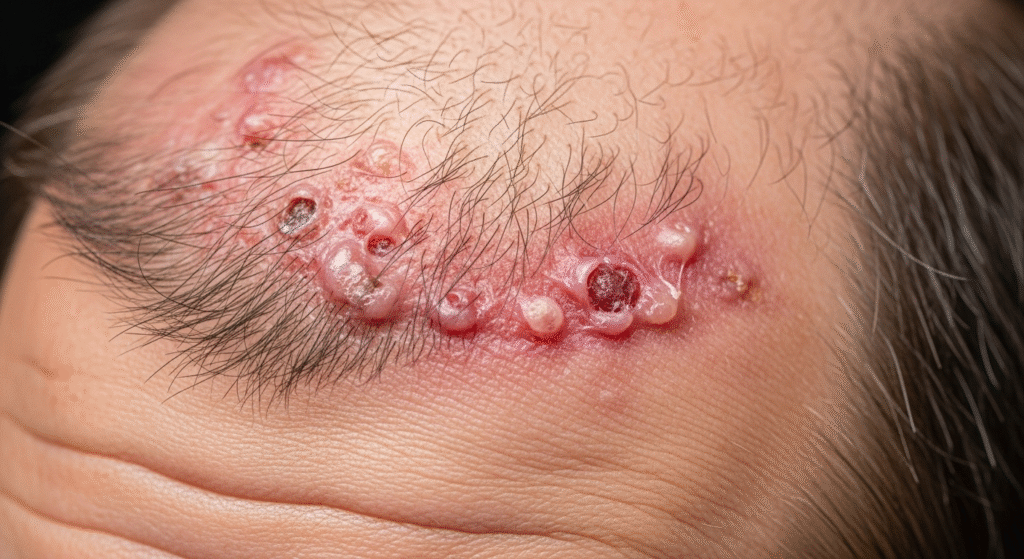
What Is Shingles and How Can It Lead to Hair Loss?
What Is Shingles?
Shingles is a viral infection caused by the varicella-zoster virus, the same virus responsible for chickenpox. After recovering from chickenpox, the virus can remain dormant in your nervous system. It may reactivate years later as shingles, causing a painful rash along the nerves. The most common symptoms of shingles include:
- Pain or burning sensation along the skin.
- Rash and blisters that form in a band-like pattern.
- Fever and general fatigue.
How Does Shingles Cause Hair Loss?
Shingles can lead to hair loss due to the damage it causes to the hair follicles. The virus attacks the nerves near the skin, and when the rash appears, it often affects the scalp. This can result in inflammation and scarring that disrupts hair growth. In some cases, if the shingles rash is severe or left untreated, the affected area may experience permanent hair loss. Additionally, the pain and stress of shingles can contribute to temporary shedding of hair.
Symptoms of Shingles Hair Loss
Initial Symptoms of Shingles
The early signs of shingles include a burning or tingling sensation in a localized area of the skin. This is often followed by a painful rash that can appear on the scalp, face, or body. If shingles affect the scalp, the blisters can cause significant irritation, which may damage the hair follicles.
- Painful blisters may form on the scalp, causing inflammation and potential hair loss.
- Skin irritation can result in excessive scratching, further increasing the risk of hair damage.
Shingles Hair Loss Symptoms
Hair loss associated with shingles can be sudden and localized. In many cases, hair thinning or shedding may occur in the areas where the rash appeared. This is primarily due to the inflammation and potential scarring from the rash.
- Thinning hair in areas of the scalp where shingles rash is most intense.
- Bald patches may develop if the rash leads to scarring of the hair follicles.
Treatment Options for Shingles Hair Loss
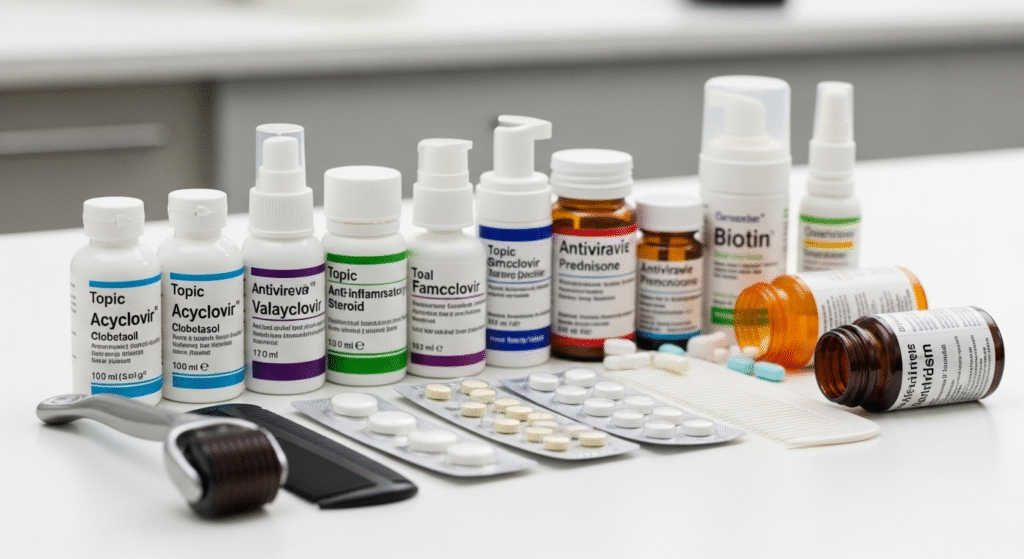
Medical Treatments for Shingles
While there is no cure for shingles, prompt medical treatment can help reduce the severity and duration of the symptoms. The following treatments can help:
- Antiviral Medications: Medications such as acyclovir and valacyclovir can reduce the duration of the shingles outbreak if taken early. These medications may also help minimize the risk of complications, including hair loss.
- Pain Relief: Over-the-counter pain relievers, such as ibuprofen or acetaminophen, can help manage the pain associated with shingles. In severe cases, stronger medications may be prescribed.
Hair Restoration Treatments
Once the shingles rash has healed, hair regrowth may begin. However, for some individuals, additional treatments may be necessary to promote hair recovery:
- Topical Treatments: Products like minoxidil (Rogaine) can stimulate hair growth and help regrow hair in affected areas.
- Hair Transplants: If significant scarring has occurred, a hair transplant may be an option for restoring lost hair in more severe cases.
Managing the Effects of Shingles-Induced Hair Loss
Post-shingles hair loss can be distressing, but there are several ways to manage it:
- Gentle Hair Care: Avoid harsh shampoos or excessive heat styling that could further irritate the scalp.
- Healthy Diet: Ensure that your diet includes vitamins and minerals like iron, zinc, and biotin, which are essential for healthy hair growth.
Preventing Hair Loss After Shingles
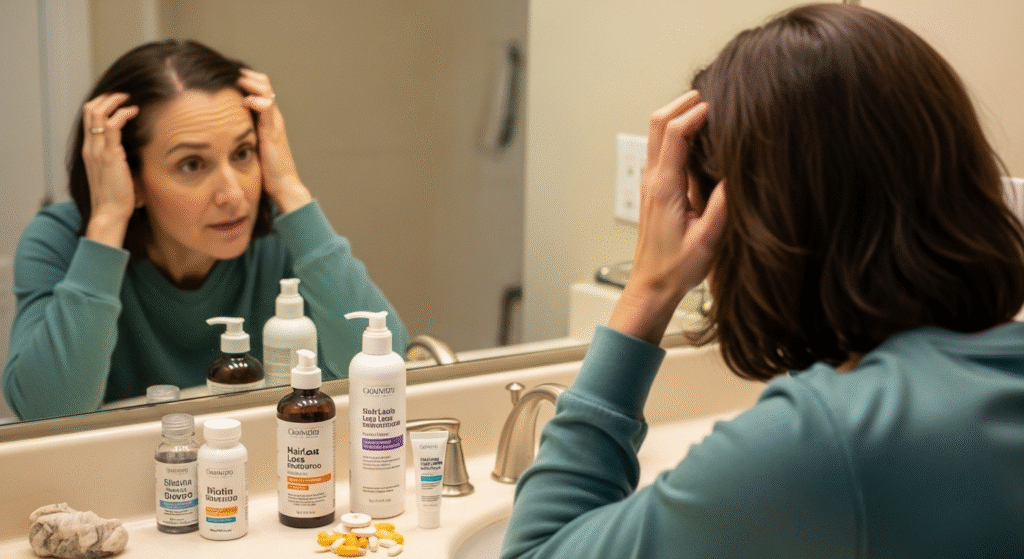
Early Treatment to Minimize Damage
The key to preventing hair loss from shingles is early treatment. If you suspect you have shingles, seek medical advice as soon as possible. Prompt antiviral treatment can help reduce the extent of the rash and minimize nerve damage, which in turn can limit the risk of hair loss.
Scalp Care and Hair Regrowth Tips
Once the shingles rash has healed, taking care of your scalp is essential to encourage hair regrowth:
- Use mild shampoos and avoid excessive hair washing, which can stress the scalp.
- Massage your scalp gently to improve circulation and encourage hair follicle health.
- Consider using essential oils like peppermint or lavender, which may promote hair growth (consult with a dermatologist first).
Expert Advice on Shingles Hair Loss
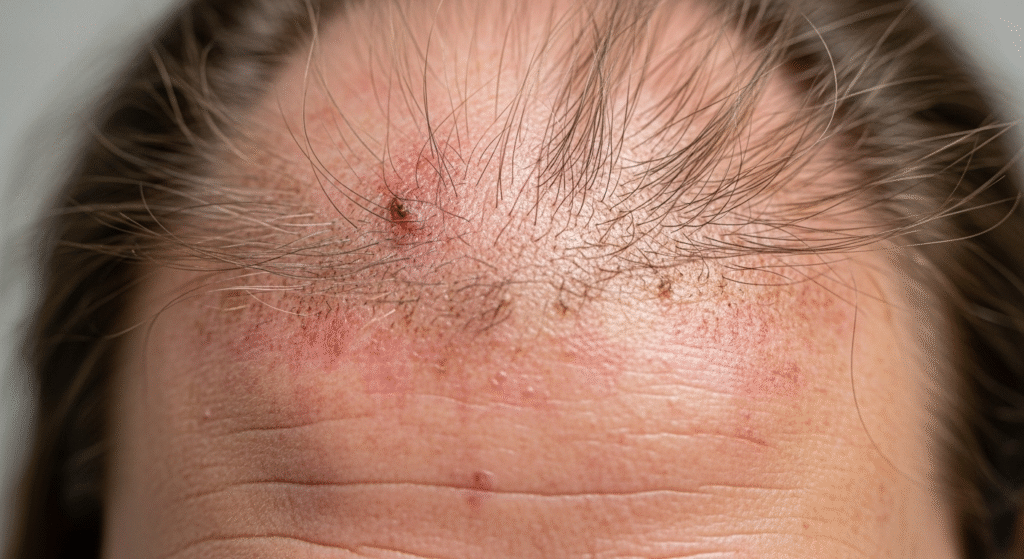
Case Studies: How Patients Regained Their Hair
Many patients who experience hair loss due to shingles can eventually regain their hair with the right treatment plan. For example, Case Study 1: A 45-year-old woman who developed shingles on her scalp saw noticeable hair regrowth within 6 months after following a combination of antiviral medications and minoxidil treatments.
FAQs
Can Shingles Cause Permanent Hair Loss?
In most cases, shingles-induced hair loss is temporary, and hair will regrow once the virus has cleared. However, if the shingles rash causes scarring, hair loss can be permanent in those areas.
How Long Does It Take for Hair to Grow Back After Shingles?
Hair regrowth can begin within a few months after the shingles rash heals. Typically, it takes about 6 months to 1 year for hair to fully regrow, depending on the severity of the shingles outbreak.
What Can I Do to Speed Up Hair Regrowth After Shingles?
To promote faster hair regrowth, consider using minoxidil and maintaining a healthy diet rich in vitamins essential for hair health, such as vitamin D, B-vitamins, and zinc.
Conclusion
If you are suffering from shingles hair loss, rest assured that recovery is possible. Many individuals experience full hair regrowth after following the right treatment plan. It’s essential to work closely with your healthcare provider to manage both the shingles symptoms and the hair loss.
Book a consultation with Dr. Uzma Irfan, an ISHRS-certified surgeon today to ensure a smooth and successful recovery after your shingles outbreak. With personalized care and the right treatment plan, you can regain both your health and your hair.

